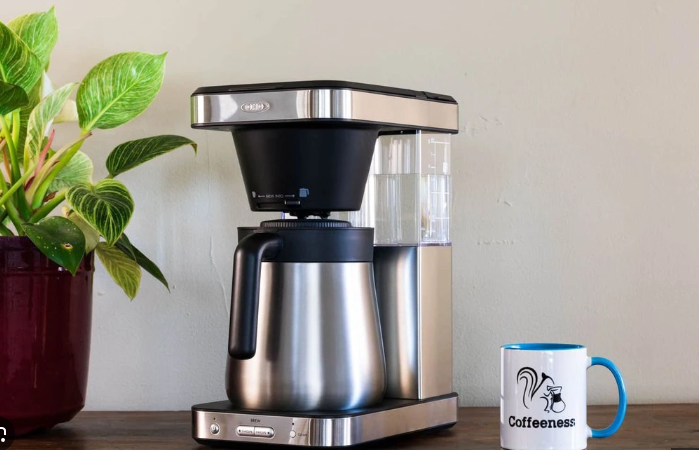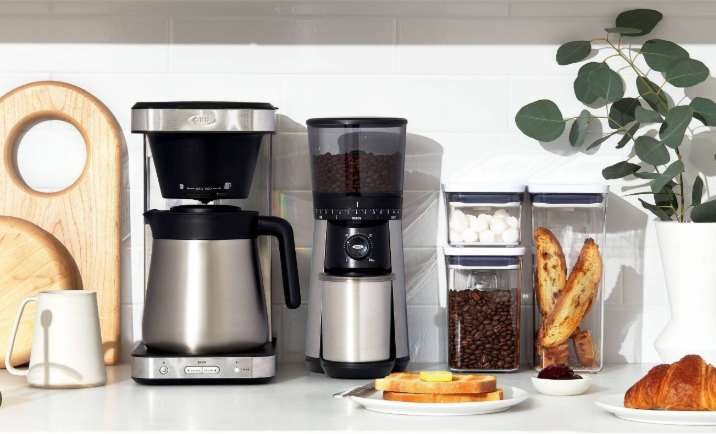In the ever-evolving world of kitchen appliances, a comprehensive coffeemaker buying guide is essential for anyone looking to enhance their morning routine. With countless options available, from drip models to single-serve systems, this coffeemaker buying guide will help you navigate the market to find the perfect machine that suits your needs, budget, and lifestyle. Whether you’re a casual sipper or a dedicated aficionado, understanding key features, types, and top recommendations is crucial. We’ll cover everything from coffeemaker setup to coffeemaker maintenance, ensuring you make an informed decision. By the end of this coffeemaker buying guide, you’ll be equipped to brew exceptional coffee at home.
Understanding the Basics: What to Consider in a Coffeemaker Buying Guide
When embarking on your search, this coffeemaker buying guide recommends starting with your brewing preferences. Do you need a machine for quick single cups or larger pots for family gatherings? Capacity is a primary factor—single-serve options typically yield 6-12 ounces, while drip models can handle up to 14 cups. Brew time varies too, with some machines delivering a pot in under 7 minutes, ideal for busy mornings.
Budget plays a significant role in any coffeemaker buying guide. Entry-level models start around $40, offering basic functionality, while premium ones exceed $300 with advanced features like customizable strength settings and thermal carafes. Energy efficiency and sustainability are increasingly important; look for machines with auto-shutoff to save power and reusable filters to reduce waste. Material quality, such as stainless steel components, ensures durability and resistance to wear.
This coffeemaker buying guide also stresses ease of use and cleaning. Intuitive interfaces minimize frustration, and removable parts make coffeemaker cleaning straightforward. Safety features, like stable bases and cool-touch exteriors, protect users, especially in households with children. For more on selecting the right model, check our best coffeemaker guide for detailed comparisons.
Types of Coffeemakers: Exploring Options in Your Coffeemaker Buying Guide
Drip coffeemakers remain popular in this coffeemaker buying guide for their simplicity and ability to brew multiple cups. They work by heating water and dripping it over grounds, producing consistent results. Single-serve pod machines offer convenience for quick brews, though pods can add to costs. Pour-over and French press options appeal to purists seeking manual control and nuanced flavors.
Cold brew makers are rising in popularity within the coffeemaker buying guide, steeping grounds in cold water for smooth, low-acidity coffee. Espresso machines, while more complex, deliver concentrated shots for lattes and cappuccinos. Each type has its place—drip for everyday use, single-serve for speed, and manual methods for customization. Consider your space and routine when choosing from this coffeemaker buying guide.
Key Features to Evaluate in a Coffeemaker Buying Guide
A solid coffeemaker buying guide highlights features like programmable timers, allowing you to wake up to fresh coffee. Adjustable brew strength caters to preferences for mild or bold tastes, while water filtration removes impurities for cleaner brews. Thermal carafes maintain heat without scorching, outperforming glass versions on warming plates.
In this coffeemaker buying guide, we emphasize smart connectivity for app-controlled brewing and voice activation. Quiet operation suits shared spaces, and compact designs fit small kitchens. Coffeemaker safety elements, such as auto-pause to prevent spills, add peace of mind. Durability, backed by warranties of 1-5 years, ensures long-term value. For tips on these features, explore our brewing tips.
Energy-saving modes and eco-friendly materials align with sustainable living. This coffeemaker buying guide advises checking user reviews for real-world reliability, focusing on consistent performance and ease of coffeemaker maintenance.
Brew Quality and Customization in Your Coffeemaker Buying Guide
Brew quality is paramount in any coffeemaker buying guide. Look for machines certified by the Specialty Coffee Association for maintaining ideal temperatures and extraction times. Customization options, like bloom cycles that pre-wet grounds for better flavor release, elevate the experience.
This coffeemaker buying guide notes that grind consistency affects taste—built-in grinders in some models ensure freshness. Water-to-coffee ratios, adjustable in advanced units, allow personalization. Experimenting with these in your chosen machine will refine your perfect cup.
Top Recommendations: Best Coffeemakers in This Coffeemaker Buying Guide
Based on extensive testing and user feedback, this coffeemaker buying guide presents top picks across categories. These models stand out for their performance, features, and value in 2025.
Best Drip Coffeemakers in the Coffeemaker Buying Guide
The OXO Brew 8-Cup leads as a versatile drip option in this coffeemaker buying guide. Compact yet powerful, it brews up to 40 ounces with a pre-infusion cycle for enhanced flavor. Priced around $200, it includes a thermal carafe option. Pros: Fast brewing, consistent results. Cons: Interface may require manual reference.
Technivorm Moccamaster KBT offers premium simplicity, brewing 40 ounces in under 7 minutes with a thermal carafe. At about $340, it’s durable with a 5-year warranty. Pros: Nuanced taste, stylish design. Cons: No programming.
For budget-conscious buyers, the Ninja 12-Cup Programmable fits the coffeemaker buying guide at under $100. It handles 60 ounces with strength settings. Pros: Affordable, intuitive. Cons: Slower brew time.
Best Single-Serve Coffeemakers in the Coffeemaker Buying Guide
Nespresso Essenza Mini shines in this coffeemaker buying guide for single-serve espresso. Compact with a 20-ounce tank, it brews in under a minute. Around $150, pros: Fast, consistent. Cons: Capsule costs.
Keurig K-Café Smart adds versatility with a milk frother and app control. Priced at about $200, it brews 6-12 ounces. Pros: Customizable, convenient. Cons: Pod dependency.
Best Manual and Specialty Coffeemakers in the Coffeemaker Buying Guide
Kalita Wave 185 pour-over dripper is a manual favorite in the coffeemaker buying guide, priced under $30. Pros: Consistent, flavorful. Cons: Requires practice.
Espro P3 French press, around $40, filters finely for clean brews. Pros: Simple, bright taste. Cons: Delicate glass.
OXO Good Grips Cold Brew Maker, about $50, steeps 32 ounces. Pros: Smooth concentrate. Cons: Longer process.

Coffeemaker Setup: Getting Started Right
Proper coffeemaker setup is the first step in your coffeemaker buying guide journey. Unbox and wash removable parts with warm soapy water. Run empty cycles to flush residues, ensuring pure taste. For programmable models, set the clock and timer—most allow 24-hour scheduling.
Fill reservoirs with filtered water to minimize scaling. Add grounds or pods, secure components, and plug in. Test brew to verify operation. This coffeemaker buying guide stresses following manuals for model-specific coffeemaker setup.
Common Setup Challenges and Solutions
During coffeemaker setup, overfilling causes spills—measure precisely. Electrical issues? Check outlets. This coffeemaker buying guide advises patience for a smooth start.
How to Use a Coffeemaker: Step-by-Step Instructions
Mastering how to use a coffeemaker enhances your coffeemaker buying guide experience. For drip models, measure 1-2 tablespoons of grounds per cup, fill water, select settings, and start—brew in 5-10 minutes.
Single-serve: Insert pod, choose size, brew in under 2 minutes. Manual methods like French press: Steep grounds 4 minutes, press. This coffeemaker buying guide recommends experimenting for preferences.
How to Brew Coffee in a Coffeemaker: Tips for Perfection
How to brew coffee in a coffeemaker involves fresh ingredients. Use medium grind for drip, fine for espresso. Adjust ratios for strength. This coffeemaker buying guide suggests noting what works best.
Coffeemaker Troubleshooting: Fixing Common Issues
Even the best machines need coffeemaker troubleshooting in your coffeemaker buying guide. No brew? Check water and power. Weak taste: Freshen grounds or descale. Leaks: Tighten seals.
Slow flow: Clean clogs with vinegar. Reset by unplugging. This coffeemaker buying guide advises manuals for codes.
Preventing Problems with Coffeemaker Troubleshooting
Proactive coffeemaker troubleshooting involves regular care. Filtered water reduces issues, keeping your machine reliable per this coffeemaker buying guide.
Coffeemaker Cleaning: Keeping Your Machine Pristine
Coffeemaker cleaning is vital in the coffeemaker buying guide. Rinse parts daily, wash weekly with soap. Descale monthly with vinegar-water, flush thoroughly.
For pods, empty trays. Eco-cleaners ensure safety. Neglect leads to poor taste, so routine coffeemaker cleaning is key.
Deep Coffeemaker Cleaning Techniques
Quarterly deep coffeemaker cleaning: Disassemble, scrub internals. This coffeemaker buying guide recommends for longevity.

Portable Coffeemaker: Options for On-the-Go Brewing
A portable coffeemaker extends your coffeemaker buying guide to travel. Compact, USB-powered units brew single cups in minutes.
Coffeemaker setup: Charge, add water/grounds. How to use a coffeemaker: Brew directly into mugs. Pros: Mobility. Cons: Limited volume.
Integrating Portable Coffeemaker into Your Routine
Pair a portable coffeemaker with home models for versatility in this coffeemaker buying guide. Follow coffeemaker safety with secure lids.
Coffeemaker Maintenance: Ensuring Longevity
Coffeemaker maintenance is crucial in the coffeemaker buying guide. Replace filters monthly, inspect cords quarterly. Store dry to prevent mold.
Track usage for servicing. Warranties provide security in your coffeemaker buying guide.
Seasonal Coffeemaker Maintenance Tips
Adjust coffeemaker maintenance for water hardness seasonally. Descale often in hard areas per this coffeemaker buying guide.
Coffeemaker Safety: Essential Guidelines
Coffeemaker safety is paramount in the coffeemaker buying guide. Auto-shutoff prevents fires, stable bases avoid tips. Handle hot parts carefully.
Secure cords, unplug unused. Child locks for families. This coffeemaker buying guide stresses safe practices.
Safety Features to Prioritize
Look for cool-touch exteriors in coffeemaker safety. Grounded plugs reduce risks in your coffeemaker buying guide.
Coffeemaker Tips: Enhancing Your Brewing Experience
Our coffeemaker tips in this coffeemaker buying guide: Use fresh beans, grind before brewing. Ratio 1:16 for balance, adjust as needed.
Preheat carafes for heat. For iced, brew strong over ice. These coffeemaker tips optimize your machine.
Advanced Coffeemaker Tips for Flavor
Experiment with bloom in coffeemaker tips. Add spices for variety in your coffeemaker buying guide.
Best Coffeemaker Guide: Making the Final Choice
This best coffeemaker guide within the coffeemaker buying guide summarizes: Assess needs—capacity, type, budget. Test models if possible.
Prioritize features like programmability. Our coffee guide offers further details.
Conclusion: Wrapping Up Your Coffeemaker Buying Guide
In conclusion, this coffeemaker buying guide equips you to select the ideal machine for 2025. From top picks like OXO and Technivorm to tips on coffeemaker setup and coffeemaker troubleshooting, you’re set for success. Embrace quality brewing with proper coffeemaker maintenance and coffeemaker safety. Happy brewing!
- Key takeaway: Follow this coffeemaker buying guide for informed choices.
- Pro tip: Regular coffeemaker cleaning ensures great taste.
- Safety first: Always prioritize coffeemaker safety.